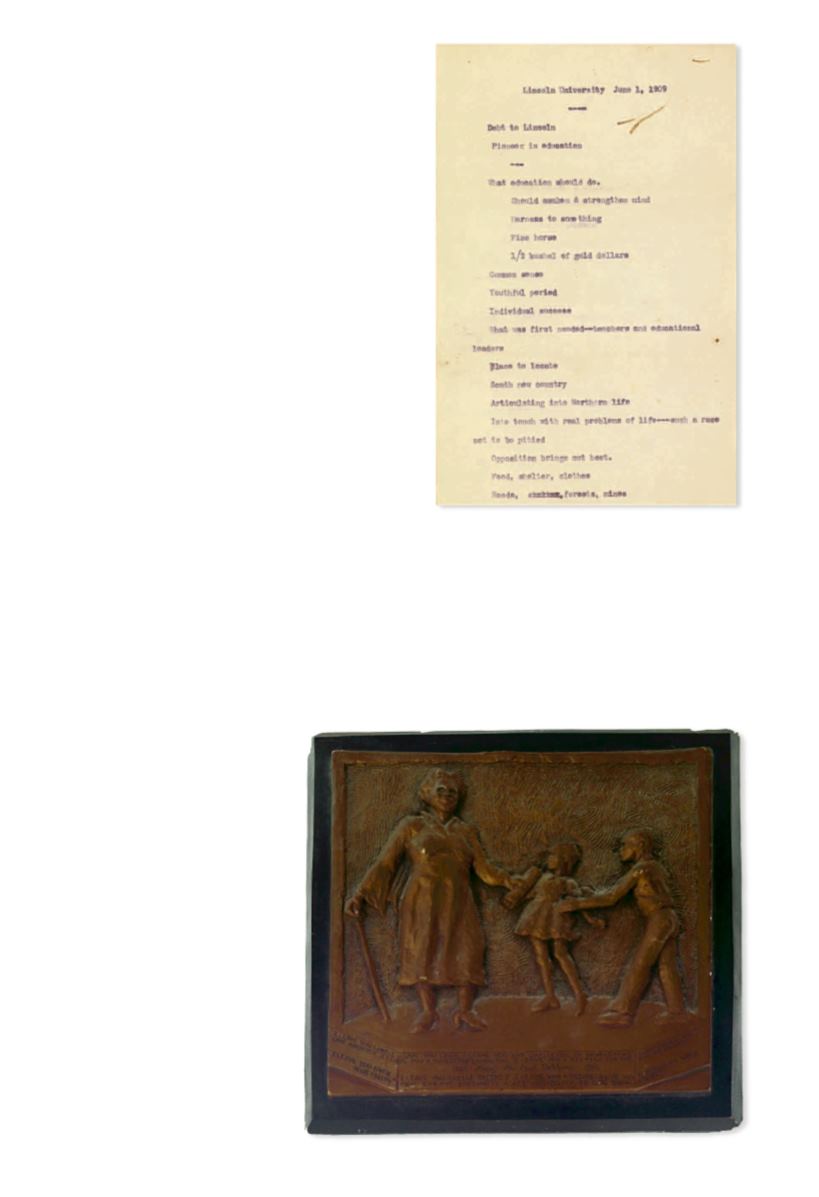

259
●
(EDUCATION—BETHUNE, MARY MCLEOD.)
I leave you love, I leave
you hope, I leave you the challenge of developing one another. . .
Plaster cast
plaque, 13
1
/
2
inches square, covered with gilt paint, with a one inch wide “frame” of plaster
as part of the piece; a few chips to the back, not affecting the image of Ms. Bethune, hold-
ing the hands of two young children.
Np, 1955
[600/800]
A lovely piece of folk art celebrating the life of this great educator and civil rights advocate. Mary
McLeod Bethune (1875-1955) was best known for starting a school for African-American students
in Daytona Beach, Florida, that eventually became Bethune-Cookman University. She was also an
advisor to President Franklin
D. Roosevelt. Born to ex-
slaves in South Carolina,
Bethune was forced to work
in the cotton fields at age
five. At about the same
age, she took an early inter-
est in her own education.
With the help of benefac-
tors, Bethune attended
college hoping to become a
missionary in Africa. When
that did not materialize,
she started a school for
African-American girls in
Daytona Beach. From six
students it grew and
merged with an institute for
African-American boys,
eventually became the
Bethune-Cookman School.
258
258
●
(EDUCATION.) WASHINGTON,
BOOKER T.
Lincoln University, June
1, 1909.
3 pages, typed; creases where folded.
Lincoln University; [Jefferson City, MO,]
1909
[600/900]
Notes for a speech delivered at Lincoln
University. The notes are Washington’s typical
hot button talking points with sub-topics added
beneath. Example: “What education should
do.” Beneath this and to the right, he has
typed, “. . . Should awaken and strengthen
mind, harness to something, fine horse,
1
/
2
bushel of gold dollars, common sense, youthful
period, individual success, what was first
needed.” Washington would use these key
words or phrases to build on, sometimes adlib-
bing the speech and other times sticking more
or less to his written notes.









